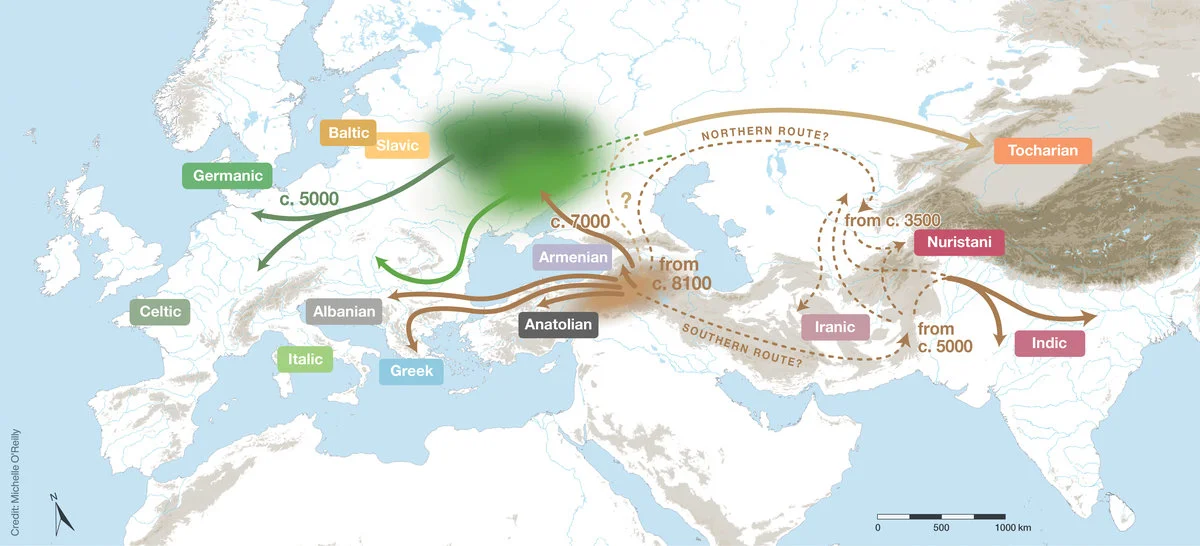The study involved linguists and geneticists, and estimated the family to be around 8100 years old, with five main branches splitting off 7000 years ago or so. That fits neither the Kurgan/Steppe hypothesis nor the farming/Anatolian one. Instead the authors propose a hybrid hypothesis, with PIE spreading initially from the southern Caucasus; and then an IE branch going north, into the steppes, and spreading from there.
Personal note: that further hints that the similarities noticed between the NW Caucasian languages and the current PIE reconstructions aren’t just a result of coincidence; they might be areal features. I wouldn’t be surprised for example if what’s currently reconstructed as *e *o was originally vertical, something like **ə **a (Ubykh style).
That’s fascinating!
Are the question marks around the northern route vs southern route addressed in the study? Or are they just assumptions?
The study itself is paywalled, so I can’t check further than tidbits, but it doesn’t seem to address the potential routes for the Indo-Iranian expansion East, if Northern or Southern (the question marks).



